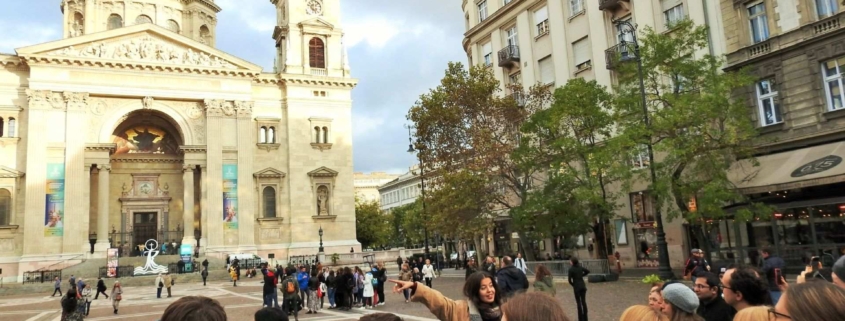When in Budapest, in the Downtown area, no one will miss admiring the biggest Roman Catholic Church of the city, the Saint Stephen’s Basilica. First a few words about the name giver of it, then an overview of the history of the building itself. Saint Stephen (István in Hungarian) or Stephen I. of Hungary, was the last Grand Prince between 997 and 1000 or 1001, and the first King of Hungary from 1000 or 1001 until his death in 1038. Gaining the throne was not easy for him, he had to fight against his relative, Koppány, who was supported by a great number of pagan warriors. The reason why Stephen was canonised is that he was the one who “christened the country”, turned the wild, pagan Hungarians into Christian people. Some of his great measures: he encouraged the spread of Christianity, punished ignoring Christian customs severely; established a system of local administration which was based on counties organized around fortresses and administered by royal officials. An interesting thing that is kept in the Basilica is Saint Stephen’s miraculously mummified right hand, the Holy Right. It has had a long and adventurous story, but finally it has been housed in the main Catholic church of Budapest for many years now, it can be seen by the public, too. Moreover, the 20th of August is a national holiday in Hungary every year: it commemorates Saint Stephen and the foundation of the Hungarian state. On some occasions they march around the Saint Stephen’s square and the Basilica with the Holy Right Hand.
Let’s see some facts about the construction of the building as well. In 1838 there was a huge flood in Budapest. On the flat Pest side of the city most of buildings were destroyed or seriously damaged and after the flood ended people started collecting money to build the biggest Catholic church of the city to thank God for saving them. The construction started in 1850s and lasted for 54 years. 3 architects worked on it, that’s why it is eclectic, has a mix of architectural styles: one can see neo-classicist, neo-renaissance and neo-baroque elements on the Basilica. Its height has a symbolic meaning with its 96 meters. The land taking Hungarian (Magyar) tribes settled down in the middle of Europe in 896, therefore the Basilica and Parliament are both 96 meters tall. It also means that the state and church are equally important in Hungary.



